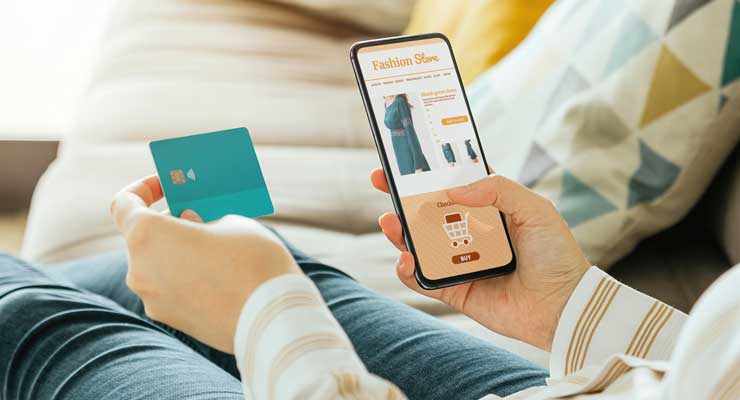- Each step of the ecommerce process, from searching for products to checkout, carries a risk of retailers losing a sale.
- “Having all of the information available on the listings page so they can make informed purchases is an increasing trend that promotes conversions.”
- “It is very crucial for stores to have a one click checkout.”
Especially with the holiday shopping season swiftly approaching, retailers need to ensure their websites are in tip top shape in order to be ready for the influx in customers. For 2022, mobile ecommerce experiences are on the radar, since 75 percent of consumers buy products with their smartphones. However, over 90 percent of consumers say the mobile ecommerce experience could be better.
Mobile customers want a convenient and streamlined shopping experience, and each step of the ecommerce process, from searching for products to checkout, carries a risk of retailers losing a sale. In order to prevent this and increase your chances of gaining loyal customers from one of the busiest shopping seasons of the year, here are five tips to boost conversion rates:
1. Optimize Your Product Listings
“Now, consumers are definitely more educated about their purchases and want to make more intentional purchases,” Gabby Wooden, Senior Content Marketing Manager at Tapcart, said. “Having all of the information available on the listings page so they can make informed purchases is an increasing trend that promotes conversions. If shoppers are able to have access to customer reviews, such as seeing if a garment fits on other consumers via photos, as well as size charts, this provides all of the information they need to buy your product and ultimately help influence that conversion rate.”
2. Feature Product Reviews
Going along with optimizing item listings, merchandise reviews provide the right information customers need in order to make an informed purchase. Social proof has such a huge impact on moving the needle with conversions, according to Wooden. Your website can provide as much information as possible about the specific item, but no one can speak to the product without bias like other shoppers.
According to Findstack, 95 percent of consumers read reviews before buying anything online. Having that duality of both how you are representing your products, as well as reviews from actual customers, will educate the buyer enough to make the purchase.
3. Create a Seamless Checkout Process
Shopify data says that 70 percent of carts are abandoned at checkout, with 18 percent abandoning their carts due to a complicated checkout process. Wooden has several recommendations in order for retailers to ensure they are creating a checkout process that is as easy as possible:
“It is very crucial for stores to have a one click checkout, as well as a suite of payment options such as Klarna and Afterpay. According to Tapcart’s Peak Season Report, 50 percent of U.S. shoppers indicated that they were less likely to buy something online if the entire checkout process took more than 30 seconds. By having elements like one click checkout, customers do not have to spend time populating any fields such as addresses and other things that can delay the process. Giving them the ability to seamlessly checkout without pause will help your conversion rates to climb,” Wooden said.
4. Offer Multiple Payment Options
Consumers are using more alternative payment methods (APM) than ever before, and merchants that allow users to pay with digital wallets, buy now, pay later plans, and other APMs stand to grow their conversion rates. Not only does this help create a more seamless and faster checkout experience, it also allows the consumer to choose what suits them and their financial standing in that moment, which ultimately boosts conversion.
5. Utilize Push Notifications
Push notifications are a free and effective way to notify and re-engage customers. Retailers that use push notifications can see up to a 10 percent increase in sales overall, according to Tapcart data.
“One of my favorite reasons for push notifications being a really favorable sales and marketing channel right now for retailers to implement is because they are an owned marketing channel. You do not have to pay for third party access to your audience,” Wooden said. “A lot of merchants are relying on third parties like Facebook and Instagram so they can power targeted message campaigns to get previous shoppers back into their stores, but these are becoming increasingly expensive. In addition, they are not performing like they used to.”
Push notifications give retailers the ability to access customers without that third party, and it is guaranteed visibility since it gets sent directly to their phones. They are a great and effective way to stay top of mind for shoppers that have expressed interest in your brand.
Making online purchases through a phone app is an emerging trend across all product categories, such as fashion and apparel, beauty and cosmetics, home and fitness, and food and drinks. According to Tapcart’s survey, shopping through a retailer’s app on their phone was the preferred method amongst over 1,000 consumers that were surveyed. If you do not have an app, now is the perfect time to invest in one before the busy holiday shopping season, and then use these tips to help boost conversion rates.
